Darpa
Latest

Centauro is a disaster-response robot that looks like a horse
These days, most robots under development seem to be based on humans. However, a tweak to these designs might actually make robots more effective and stable. Centauro is based on the design of a centaur, hence the name, and its four legs on wheels provide movement and freedom that have been unachievable with comparable bipedal models. Its human-like torso and arms allow it to perform fine motor functions.

DARPA pushes for AI that can explain its decisions
Companies like to flaunt their use of artificial intelligence to the point where it's virtually meaningless, but the truth is that AI as we know it is still quite dumb. While it can generate useful results, it can't explain why it produced those results in meaningful terms, or adapt to ever-evolving situations. DARPA thinks it can move AI forward, though. It's launching an Artificial Intelligence Exploration program that will invest in new AI concepts, including "third wave" AI with contextual adaptation and an ability to explain its decisions in ways that make sense. If it identified a cat, for instance, it could explain that it detected fur, paws and whiskers in a familiar cat shape.
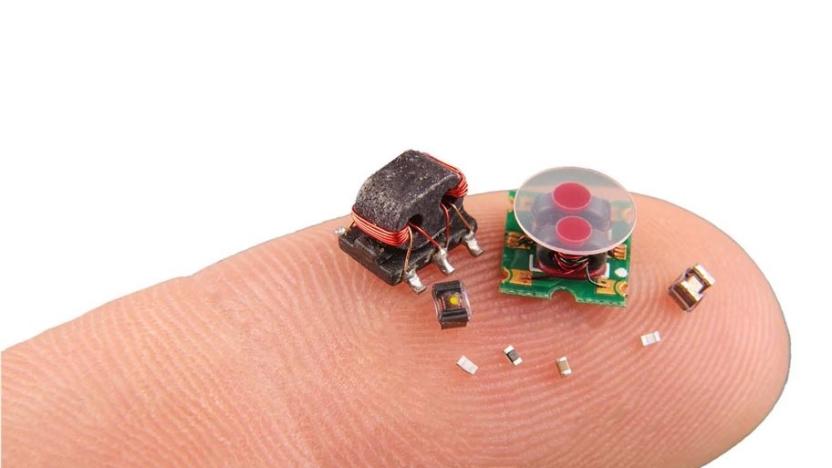
DARPA's insect-sized SHRIMP robots could aid disaster relief
DARPA's efforts to propel military technology forward often manifest in a diverse fashion, spanning everything from drone submarine development to a biostasis program that aims to buy more time to rescue soldiers on the battlefield. The SHRIMP program, short for SHort-Range Independent Microrobotic Platforms, is another potentially life-saving initiative that is being designed to navigate through hazardous natural disaster zones.

DARPA wants better forecasts for near-Earth orbit space missions
DARPA, the government's mad science wing, wants "weather" forecasts for outer space like we've got here on terra firma. The idea is that as we're increasingly launching satellites into low-Earth orbit -- not to mention prepping for commercial spaceflight -- we'll need the ability to predict smaller space weather events as well as big ones.

DARPA wheels change from tires to tracks without stopping
Travel across difficult terrain usually involves a lot of compromise. Tracks will get you where you need to go, but they're slow whenever you're covering open ground. DARPA, however, doesn't think you should have to make that choice. It's working with Carnegie Mellon University on Reconfigurable Wheel-Track technology that converts wheels from tracks to tires (and vice versa) in the middle of a drive. As you can see in the clip below, the change takes just two seconds -- you could drive off the road and up a hillside without skipping a beat.

Defense contractors took an explosive drone on a Delta flight
Employees from AeroVironment allegedly brought a drone with explosives attached to it in a carry-on bag, on a Delta flight in April 2015. As Bloomberg reports, the flight had 230 passengers and when another employee, Mark Anderson, discovered this and reported it to the Department of Defense a month later, he said he was punished, stripped of his responsibilities and then fired without a severance package.

US military hopes to launch rockets in 'days, not years'
Even in the era of private spaceflight companies, the process of getting a rocket into space is glacially slow: it can take months or years to schedule and prepare for a mission. That was fine when launching any rocket was a special occasion, but DARPA thinks the industry can do better. The military research agency recently kicked off a Launch Challenge that encourages companies to cut these launch timetables to "days, not years." Teams will have to develop systems that can launch two low Earth orbit rockets at different sites within days of each other, and with little advance notice. They'll only know where the first launch site will be within a "few weeks," and they'll learn about the payload mere days before blastoff.

Medics may slow biological time to save soldiers' lives
Battlefield medics frequently only have a brief window of opportunity to treat an injury before it's fatal or causes permanent disabilities, and it's frequently so fleeting that there's not much they can do. DARPA is exploring an unusual solution to that problem: slow the biological processes to give medics more room to breathe. Its new Biostasis research program aims to bring cell activity to a near halt by using biochemicals that control energetics at the protein level. If animals like tardigrades and wood frogs can stabilize their cells to survive freezing and dehydration, similar techniques might offer more time to medics who want to treat wounds before a victim's vital systems break down.
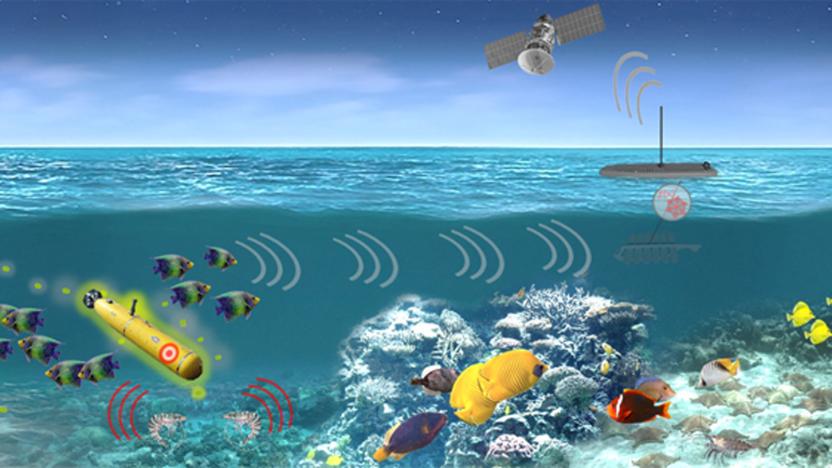
US military explores using sea life to spot threats
The sea is potentially full of undersea military threats, and that makes it daunting to detect them all using hardware. The scale and cost would be utterly impractical. DARPA, however, has a potential workaround: make sea life do the work. It recently launched a Persistent Aquatic Living Sensors program (yes, that shortens to PALS) that will study the viability of using both natural and modified sea organisms to detect underwater vehicles. If the US military can translate the biological responses of this sea life into usable data, it could warn ships without needing conspicuous, expensive hardware -- the fish and plants would be enough.
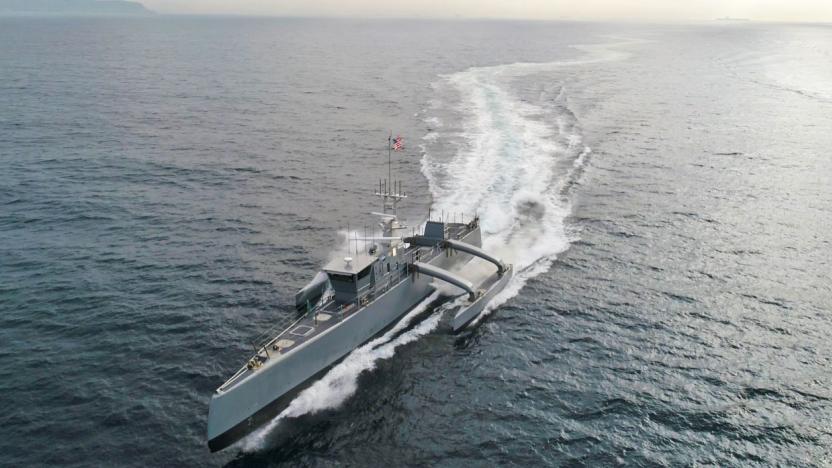
DARPA turns drone ship development over to the Navy
DARPA has completed its part in the development of Sea Hunter, a submarine-hunting drone ship that can cross the open seas without a human crew for months at a time. It has officially handed over the ship's development to its project partner, the Office of Naval Research, which has already begun fine-tuning the drone's autonomous features. The Navy has also renamed the drone to Medium Displacement Unmanned Surface Vehicle (MDUSV)... which really isn't any better than its old name, Anti-Submarine Warfare Continuous Trail Unmanned Vessel or ACTUV. We've got a feeling people will stick to calling it Sea Hunter, unless the Navy can come up with a snappier nickname.

Boeing shows its vision for a hypersonic spy aircraft
Lockheed isn't the only one hoping to make a hypersonic spy aircraft. Boeing has provided early details on its own design for a hypersonic tech demonstrator that would lead to a spiritual successor to the SR-71 Blackbird. In some ways, it's a logical extension of the company's X-51A Waverider: the wedge-shaped, twin-tail body is designed to minimize drag while gulping in as much air as possible. It would be about as long as the Blackbird, but its Mach 5-plus top speed would leave the older Mach 3.2 jet far behind.

Researchers create prosthetic hand that offers more lifelike dexterity
Researchers at Georgia Tech have developed a prosthetic hand inspired by the bionic one given to Star Wars' Luke Skywalker. What sets this one apart from other prosthetics is the amount of dexterity it offers, allowing users to move individual fingers at will. With it, Jason Barnes, the amputee working with the researchers, was able to play piano for the first time since losing part of his arm in 2012.

DARPA is engineering plants to act as biohazard sensors
Researchers at DARPA, the DoD's arm that focuses on developing new technology for military application, have long been trying to figure out the best way to transmit timely information, focusing on electronic and mechanical sensors to do the job. After all, it's crucial to any military action. But it turns out that the Defense Department might have been barking up the wrong tree. DARPA's new Advanced Plant Technologies (APT) program is aimed at growing plants that can function as spies.
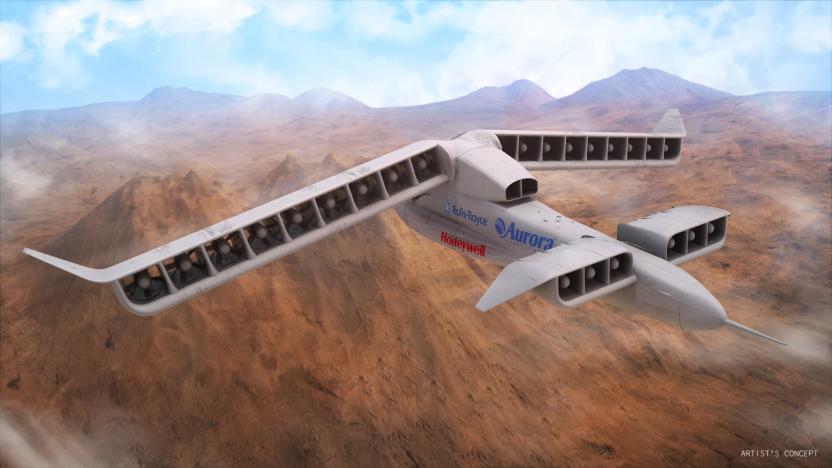
Boeing buys Aurora, an autonomous drone company
Boeing has announced that it's buying Aurora Flight Sciences, a company that is developing autonomous flying vehicles. Aurora's strengths are in creating aircraft that take off and land vertically, and is looking to eliminate pilots from the equation entirely. The company has been working on such technology for the better part of three decades, and also worked with Uber on its own flying taxi project.

Flat microscope for the brain could help restore lost eyesight
You'd probably prefer that doctors restore lost sight or hearing by directly repairing your eyes and ears, but Rice University is one step closer to the next best thing: transmitting info directly to your brain. It's developing a flat microscope (the creatively titled FlatScope) that sits on your brain to both monitor and trigger neurons modified to be fluorescent when active. It should not only capture much more detail than existing brain probes (the team is hoping to see "a million" neurons), but reach levels deep enough that it should shed light on how the mind processes sensory input. And that, in turn, opens the door to controlling sensory input.

DARPA is helping six groups create neural interfaces for our brains
Elon Musk isn't the only one looking to rummage around inside your skull. DARPA announced on Monday that it has selected its five grant recipients for the Neural Engineering System Design (NESD) program, which it began at the start of this year. Brown University, Columbia University, The Seeing and Hearing Foundation, the John B. Pierce Laboratory, Paradromics Inc and the University of California, Berkeley will all receive multi-million dollar grants to help develop various aspects of the emerging technology.

American military backs an entirely new kind of processor
Virtually every processor you see is based on the same basic (Von Neumann) computing model: they're designed to access large chunks of sequential data and fill their caches as often as possible. This isn't the quickest way to accomplish every task, however, and the American military wants to explore an entirely different kind of chip. DARPA is spending $80 million to fund the development of the world's first graph analytic processor. The HIVE (Hierarchical Identify Verify Exploit) accesses random, 8-byte data points from the system's global memory, crunching each of those points individually. That's a much faster approach for handling large data, which frequently involves many relationships between info sets. It's also extremely scalable, so you can use as many HIVE chips as you need to accomplish your goals.
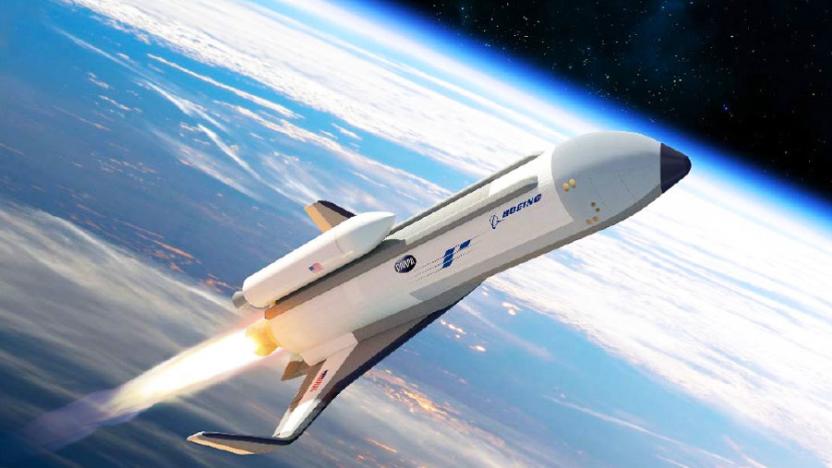
Boeing is building DARPA's new hypersonic space plane
A few years ago, DARPA started work on a new experimental aircraft project called the XS-1, a vehicle designed to make launching satellites a faster, less expensive endeavor. Today, that project just took a huge leap forward: DARPA has announced that it's partnering with Boeing to build its next generation hypersonic space plane. Specifically, the aircraft manufacturer has been tapped to complete advanced design work on the XS-1 project, following up on the concept Boeing pitched to the agency during the project's early stages -- which it will now help build and test over the next several years.

DARPA successfully flew a model of its 24-fan electric plane
DARPA's experimental Vertical Takeoff and Landing (VTOL) aircraft, the XV-24A LightningStrike, cleared another developmental hurdle by completing its subscale flight tests in early March, according to its manufacturer, Aurora Flight Sciences.

DARPA has laid the groundwork for thought-powered prosthetics
New research from the government's mad science wing, DARPA, could make life an awful lot easier for people who use prosthetic limbs. You see, DAPRA has devised what it calls the "Atomic Magnetometer for Biological Imaging in Earth's Native Terrain." Or, "AMBIIENT" if you're into the whole brevity thing.








